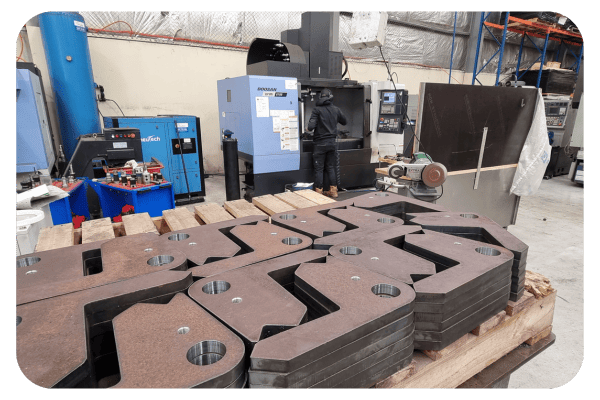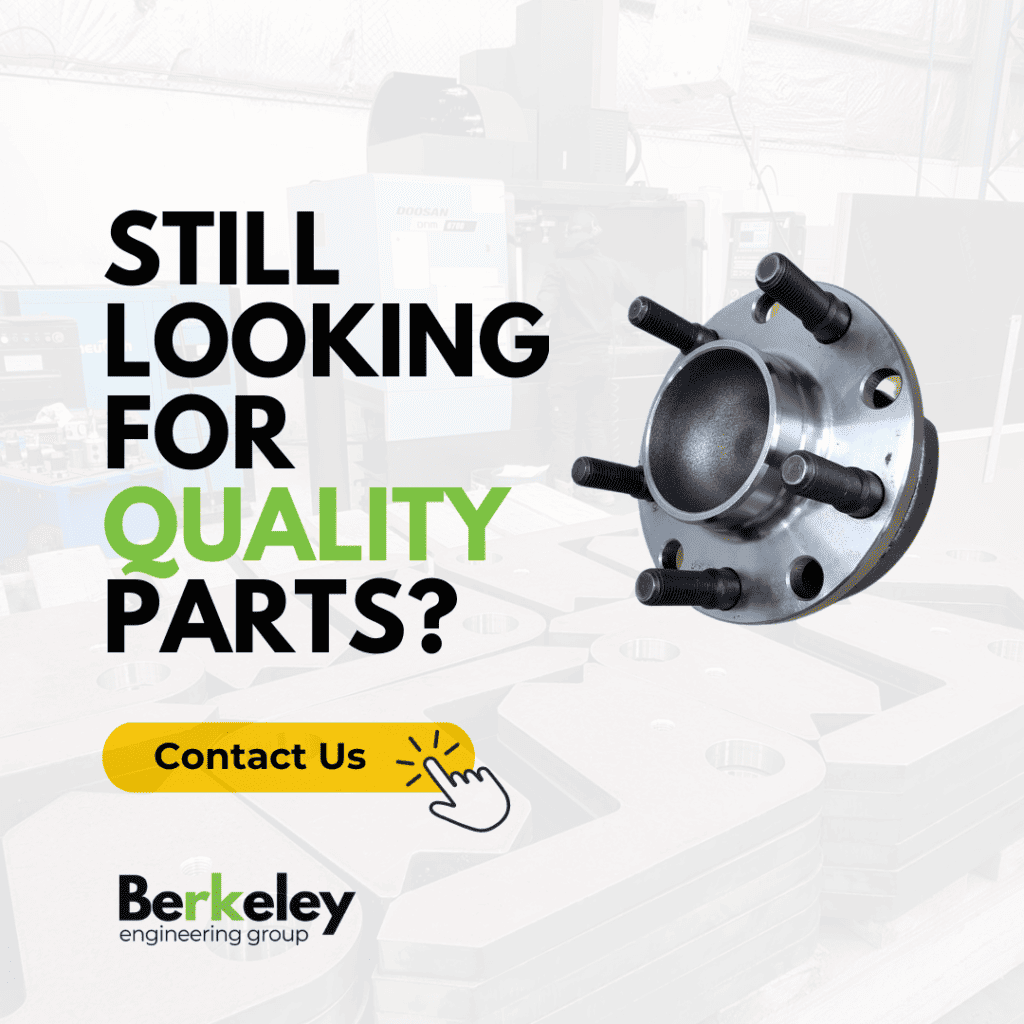
CNC Machining vs. Traditional Methods: The Efficiency Face-Off

When it comes to CNC manufacturing, precision, efficiency, and cost-effectiveness are key considerations for selecting a machine partner. While traditional CNC methods have been reliable for many years, advancements in technology have brought about the rise of large-scale CNC machining as a superior alternative. This article examines the benefits of large-scale CNC machining compared to traditional CNC manufacturing methods, and explains why it is increasingly favored by manufacturers for their machining projects.
- Understanding CNC Machining
- Traditional CNC Methods
- Challenges with Traditional CNC Methods
- Large-Scale CNC Machining
- Advantages of Large-Scale CNC Machining
- Applications of Large-Scale CNC Machining
- In Conclusion

1. Understanding CNC Machining
Modern day CNC (Computer Numerical Control) machining is a process that utilises the latest technology, automated tooling and equipment to produce precision quality parts and components made from various materials. A wide range of industries rely heavily on modern CNC machining capabilities to manufacture their parts and components with extreme precision, including medical, mining, agriculture and more. The key advantage with modern CNC manufacturing is the speed to market and accuracy when creating custom components to specification, making modern CNC Machining highly cost effective.
2. Traditional CNC Methods
Traditional CNC methods involve the use of smaller machines that can handle relatively small parts and components. These machines have limitations in terms of their size and scale, which can be a challenge when working on larger projects. These smaller machines (such as lathes, grinders, bandsaws and drill presses) also tend to be much more hands on and manually operated, where as modern computer based machines rely on CAD/ CAM software and robotic technology to achieve results much quicker using a range of machining capabilities in one machine.
The process of metal machining prior to the invention of CNC technology was a time-consuming and labor-intensive task that relied on highly skilled engineers and machinists to operate machines manually. The machinists had to carefully measure and mark the metal, then use various cutting tools, such as lathes and mills, to shape and cut the material. This process could be time-consuming, often taking hours or even days to complete a single part!
The machinists had to constantly monitor the machines and make adjustments as needed, ensuring precision and accuracy in the final product. Additionally, the manual nature of the process meant that there was a higher risk of human error, leading to potential rework or scrap parts. With the advent of CNC technology, machining became significantly faster and more efficient, as the computer-controlled machines could automatically execute complex operations with great precision.
For this reason modern day CNC manufacturing is preferred by most businesses due to their speed, however manual operations are still used especially when developing prototypes or working with smaller components.



3. Challenges with Traditional CNC Methods
Traditional CNC methods have long been the go-to solution for precision manufacturing. However, they come with their fair share of challenges. One of the main hurdles is the limited flexibility they offer. These methods often require extensive reprogramming and recalibration for even minor design changes, resulting in significant downtime. Moreover, traditional CNC machines can be quite costly to acquire and maintain, especially for small businesses. The complexity of these machines also poses a challenge, as operators need highly specialised training to operate them effectively. Additionally, the size limitations of traditional CNC machines can restrict the types and sizes of parts that can be produced. This can be a major setback for industries that require large or intricate components. Lastly, the reliance on physical tooling in traditional CNC methods can lead to increased production times and costs. Overall, while traditional CNC methods have their benefits, they also present several challenges that can hinder efficiency and productivity in manufacturing processes.



4. Large-Scale CNC Machining
Large-scale CNC machining is a crucial process of manufacturing for a wide range of industries. With state-of-the-art technology and precision engineering, large-scale CNC machining allows for the production of complex and intricate parts with extreme accuracy and efficiency. The entire process involves the use of computer-controlled machines that cut, shape, and form materials, such as metal, plastic, or wood, into the desired specifications. These machines can handle large workpieces and perform a wide range of operations, including milling, drilling, turning, and grinding. The advantages of large-scale CNC machining are numerous, as it enables faster production times, improved quality control, and cost-effective manufacturing. Additionally, the ability to automate the process reduces the risk of errors and increases overall productivity. Therefore, large-scale CNC machining plays a vital role in meeting the demands of modern industries and ensuring the production of high-quality products.
5. Advantages of Large-Scale CNC Machining
Large-scale CNC machining offers numerous advantages when compared to traditional CNC methods. One of the key benefits is the ability to produce larger and more complex parts with precision and accuracy. This is made possible by the larger work area and increased spindle power of large-scale CNC machines. Additionally, these machines often have advanced automation features that allow for faster and more efficient production processes. Another advantage is the reduced setup time, as large-scale CNC machines can accommodate multiple tools and fixtures, eliminating the need for frequent tool changes. Furthermore, these machines can handle a wider range of materials, including harder and more durable metals, which opens up new possibilities for manufacturers. Overall, large-scale CNC machining is revolutionising the manufacturing industry by offering increased productivity, improved quality, and greater versatility.
- Increased Capacity: Large-scale CNC machines can handle much larger workpieces, allowing for the production of bigger and more complex parts. This is particularly beneficial for industries that require large or intricate components.
- Improved Efficiency: Large-scale CNC machining offers faster production times due to the ability to work on multiple operations simultaneously. This reduces downtime and increases overall productivity.
- Enhanced Precision: State-of-the-art technology and precision engineering in CNC machines ensure extreme accuracy in the production of parts. This results in improved quality control and reduces the risk of errors.
- Cost-Effectiveness: Large-scale CNC machining can be more cost-effective compared to traditional CNC methods. The ability to automate the process reduces labor costs, and the production of larger quantities of parts in a shorter time frame can lead to cost savings.
- Flexibility and Adaptability: Large-scale CNC machines offer greater flexibility and adaptability to design changes. Minor modifications can be easily made without extensive reprogramming and recalibration, reducing downtime and increasing efficiency.
- Automation: Large-scale CNC machining allows for the automation of the manufacturing process. This reduces the reliance on manual labor and minimises the risk of human error. It also enables continuous production, even during non-working hours.
6. Applications of Large-Scale CNC Manufacturing
Large scale CNC manufacturing allows industries to easily scale their projects production needs whilst maintaining quality and precision manufacturing. This varies depending on the need, however some industries that regularly rely on large scale CNC machining include agriculture, construction, defence and transportation. The ability to mass produce parts and components efficiently means that businesses can fulfill project needs ahead of schedule and to budget, which is why majority of industry leaders factor in custom machining services as part of their budget and planning requirements. It all contributes to being part of a bigger solution, especially when conducting large scale machining operations or projects that require multiple moving parts.
For example, large-scale CNC machining has diverse applications. It’s commonly used in industries like agriculture, defence, construction and transportation.
- In agriculture, large-scale CNC machining is used to manufacture heavy machinery parts, such as tractor components, harvesting equipment, and irrigation systems. These machines require precise and durable parts to withstand the demanding conditions of farming.
- In the defence industry, large-scale CNC machining is crucial for manufacturing military equipment and weapons. This includes components for vehicles, aircraft, and naval vessels. The high precision and reliability of large-scale CNC machines ensure the quality and performance of these critical parts.
- In the construction industry, large-scale CNC machining is used to produce structural components, such as beams, columns, and trusses. These parts need to be accurately manufactured to ensure the safety and stability of buildings and infrastructure projects.
- In transportation, large-scale CNC machining is utilised in the production of automotive parts, railway components, and aerospace parts. The ability to manufacture complex and high-quality parts enables the efficient and reliable operation of vehicles and aircraft.
Overall, large-scale CNC machining is essential in various industries to meet the demands of manufacturing large and complex parts. It allows for faster production, improved quality control, and cost-effective manufacturing, making it a vital process in modern industrial production.
7. In Conclusion
In the world of manufacturing, large-scale CNC machining is proving to be a game-changer when it comes to maximising efficiency at every turn. Its calculated precision, versatility, and efficiency make it a better choice than traditional CNC methods, not to mention the added benefit of being more cost effective. Embracing this technology will lead to cost savings, faster production, and a reduced environmental footprint which majority of manufacturers are moving towards as a means to be more sustainable in production techniques.
Who are we?
Berkeley Engineering has a rich history of producing high-quality components since 1931. Our CNC machining operations in Australia offer a comprehensive range of services, including CNC turning, metal fabrication, plasma cutting and more. We are dedicated to delivering custom components of the finest quality for your projects. Whether you require low or high volume production, our manufacturing services are cost-effective and efficient, with turnaround times as fast as one business day.
Contact Us:
We'd love to discuss your next project and how our partnered solutions can scale with your business operating needs.


